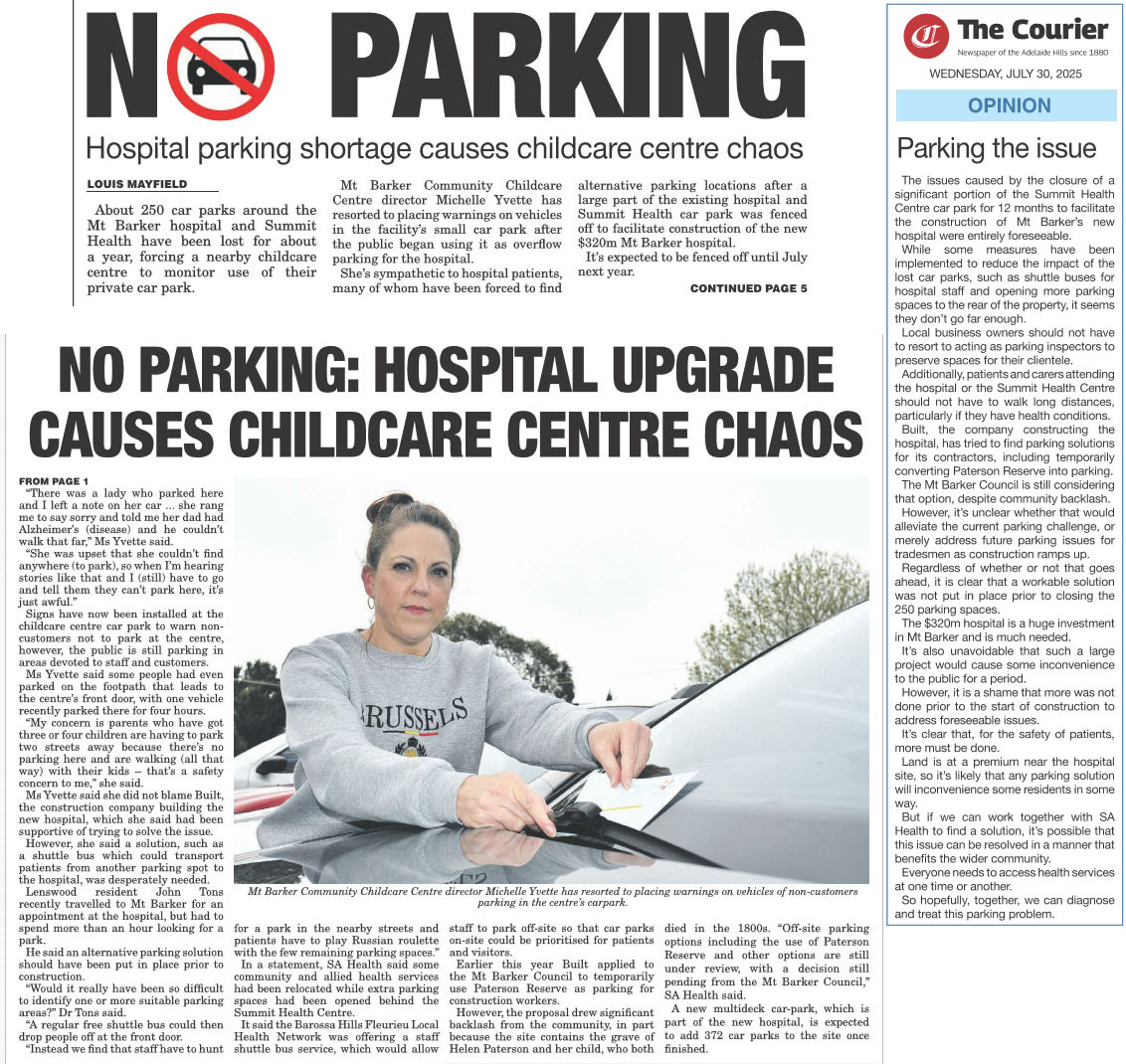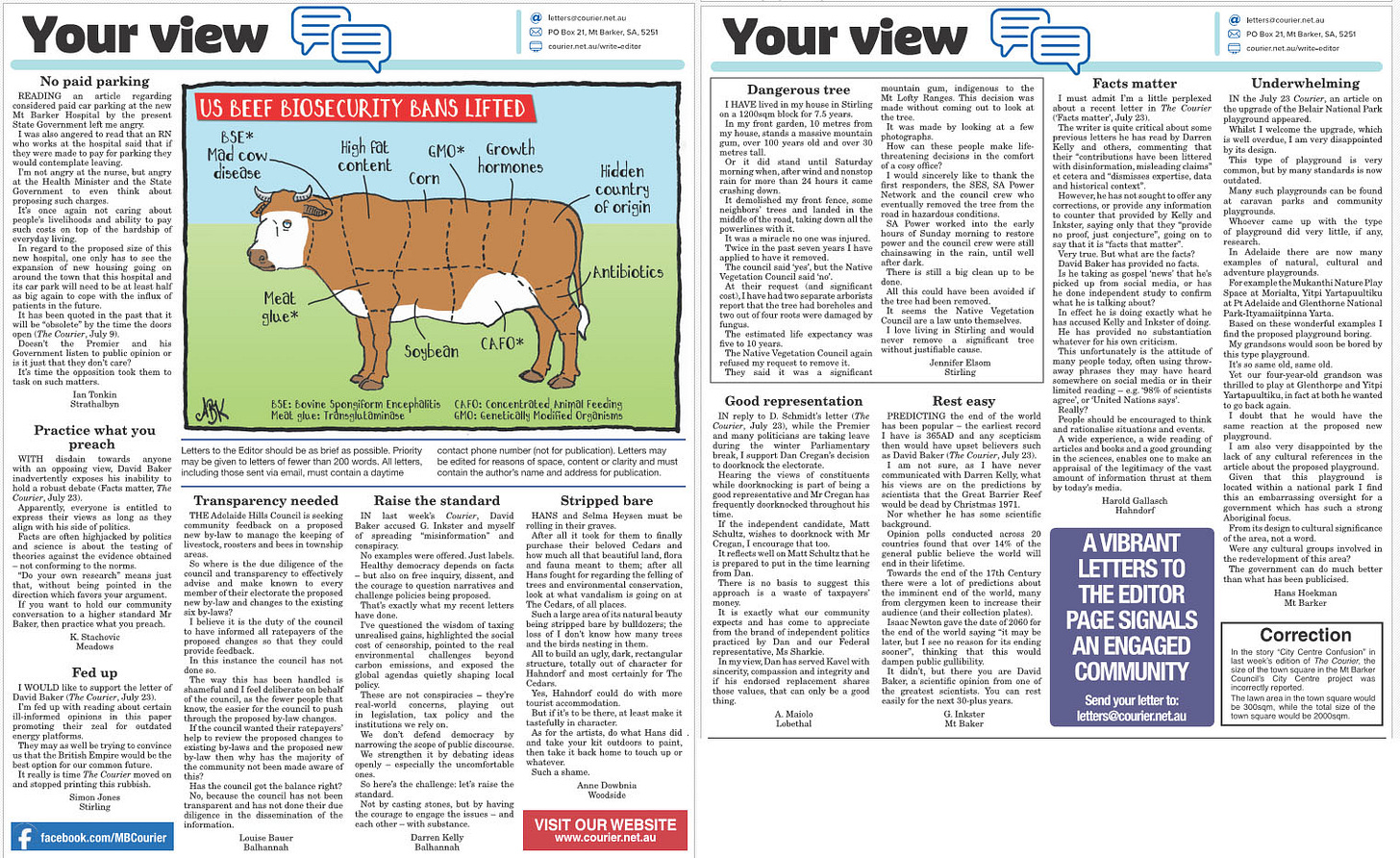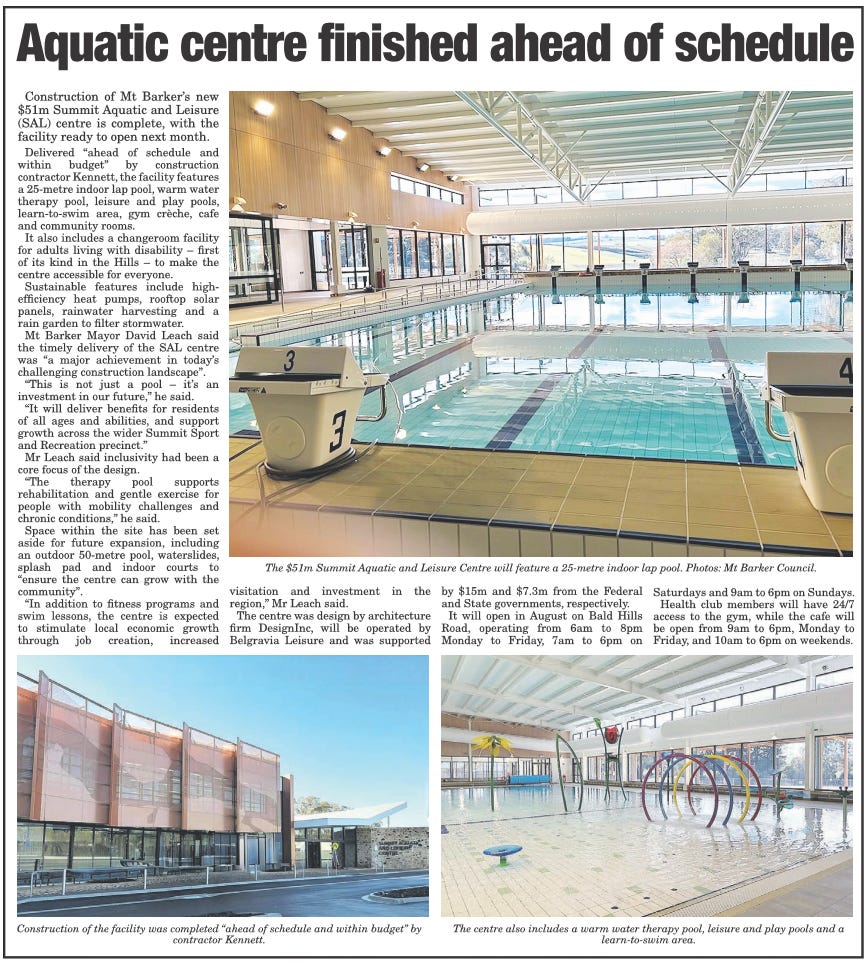Commencing countdown, engines on.
Processing the latest telemetry from the Courier's 30 July release.
Let's sort the signal from the noise.
For maximum cynical effect, the online version comes highly recommended. Click the header image to access.
First up:
Thomas down but not out
P1,11: Drought blamed for abattoir staff stand down
“The drought has sharply decreased sheep numbers, with recovery not expected before 2027” – Thomas Foods International
Let’s be honest — this story could have so easily gone off the rails into climate alarmism, so credit to The Courier for avoiding that detour. That said, it’s still a brutal blow for hundreds of workers in Lobethal now stood down without pay.
Whether you admire or loathe how Thomas Foods operates, the commercial reality is hard to ignore. If livestock numbers aren’t there, neither is the business case. That’s not to say the company is blameless — after all, this is the same business that took the insurance payout and moved much of its core processing out of Murray Bridge after the fire. Still, we can’t pretend the economics don’t matter.
The bigger question is what happens next. Let’s hope local jobs are reinstated as promised, and that this isn’t a permanent shift toward a leaner, foreign-heavy operation. Rural industries are already struggling to attract and retain workers—another hit like this could be a knockout punch for some families.
No Parking — A predictable mess
P1,5: No Parking — Hospital upgrade causes childcare centre chaos
P2: Opinion
“Would it really have been so difficult to identify one or more suitable parking areas?” – John Tons
Some problems are hard to predict. This wasn’t one of them.
We’ve known for over a year that the Mt Barker hospital site would be under construction and that 250 car parks would be lost. So why was no off-site parking solution arranged in advance? Why are parents now hauling toddlers two blocks down the road while hospital patients circle like vultures for a park?
The Courier’s editorial calls it a ‘shame’ that a plan wasn’t in place beforehand. I’d go further — this was a basic operational requirement, and the failure to meet it has caused serious and ongoing disruption for families, patients, and staff.
The impact is widespread. Childcare staff are now acting as parking inspectors just to keep spots free for their own customers. Elderly patients are being dropped off alone while drivers go on parking hunts. Parents with young children are forced to walk long distances just to make drop-offs. I’ve personally dealt with this — and it’s worse than frustrating.
To their credit, Built (the contractor) tried to explore options like using Paterson Reserve. But as usual, council kicked the can down the road, and SA Health offered little in the way of meaningful logistics. A shuttle bus? Overflow parking? Rerouting contractors off-site? All of it should’ve been in place before a single fence went up.
Yes, the new $320 million hospital is a major investment, and yes, inconvenience was inevitable. But there’s a difference between unavoidable disruption and completely avoidable incompetence. We didn’t need hindsight to see this coming — just a little leadership.
The Courier rightly says everyone needs access to health services. That includes the ability to actually get there.
Your View
Page 6, 7: Letters to the Editor — A rare dose of honesty and dissent
👉 This week particularly the letters pages serves as a kind of pulse check on the community. This week’s contributions show a surprisingly frank and balanced spread of thought—some sharp, some shaky, but at least we’re seeing people engage.
The parking saga at Mt Barker Hospital gets another clip from Ian Tonkin, and rightly so. If you’re forcing hospital staff and patients to pay for parking in the middle of a car park shortage, you’ve lost the plot. The absurdity writes itself.
On the censorship and “facts” debate, there’s real heat — and wherever you may land on this issue it’s good to see discussion play out in public discourse. Letters from Gallash, Inkster and myself push back against the idea that truth is whatever the loudest credentialed expert says it is. That debate matters. We’re not meant to rubber-stamp the so called established views — we’re meant to test them. The key take away — If you’re scared of dissent, maybe your argument’s not as strong as you think.
Jennifer Elsom’s piece on the tree saga in Stirling is also worth noting. A 100-year-old tree crashes down after being flagged as unsafe, and yet the Council had twice refused removal. This is bureaucracy at its worst — playing God with people’s safety in the name of green virtue.
Meanwhile, the strip-mining of Hahndorf’s character continues. Hans Menz and Simone Downie both take aim at uninspired playground plans and reckless tree clearing. If council wants to promote the town as a unique destination, it should stop making it feel like every other generic suburb.
These pages show that the community is paying attention. The frustration is growing — not just about parking or playgrounds — but about the broader sense that decisions are being made by people who are insulated from consequence and immune to logic.
Let’s hope the editors keep publishing these letters. We need more light, less fog.
P12: Aquatic centre finished ahead of schedule
“It will deliver benefits for residents of all ages and abilities” – Mayor David Leach
On paper, this looks like a win — a $51 million aquatic centre, delivered ahead of schedule and under budget. Credit where it's due: that’s no small feat in today’s climate.
But here's the rub. While it’s nice to see a high-profile project come together so smoothly, it’s hard to ignore the glaring contrast elsewhere. Hahndorf is still choking on traffic. Roads across the district are in disrepair. Hospital parking is a rolling debacle. And yet, somehow, this got prioritised — complete with polished media releases and a quote from the Mayor beaming about “investment in our future.”
Forgive the cynicism, but this has all the hallmarks of a political showpiece that photographs well and cements names on plaques. No doubt the facility will be welcomed by many, especially families and those with mobility issues. But was this truly the most pressing need in a region still lacking the basics?
Let’s hope it delivers real, ongoing value — not just another entry in the Mayor’s highlight reel.
P13: 338 new house lots opening
“A natural extension” — Developer
Another week, another land release — this time 338 new lots at Clover Park, described as a “natural extension” of Mt Barker’s relentless urban sprawl.
Let’s be clear: this isn’t about leafy neighbourhood charm or balanced regional growth. It’s a numbers game — more rooftops, more ratepayers, more developer profits. And once again, it’s outpacing infrastructure at every turn.
Where’s the matching plan for roads, schools, emergency services and dare I say it, an appropriately sized hospital? Where’s the honest conversation about water supply, stormwater runoff, or the impact on local wildlife corridors? A pocket park and a landscaped basin don’t magically absorb 338 new households.
Developers talk of “community amenity” and “multi-year investment,” but residents know what this really means — more congestion on the roads, more pressure on already-stretched services, and less of the rural character that made the Hills desirable in the first place.
Mt Barker’s population is booming, yes. But growth without foresight isn’t progress. It’s policy failure.
Comic Relief
Control Tower
That’s enough signal interference for one week. Powering down before I mistake policy for satire. Oh wait — too late.
Hope you’ve enjoyed this week’s commentary.
Disclaimer:
All views expressed are the personal views of Darren Kelly. They are independent of any official role or organisation and reflect an ongoing commitment to open discussion and democratic integrity.







